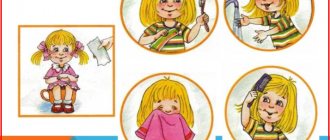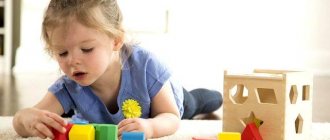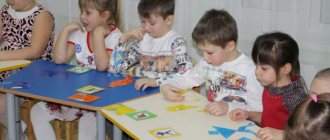In this article we will talk about one of the types of human memory - visual. You will learn what types of memory there are and how to train it.
Visual memory is also called photographic memory. It allows you to create an image of what you saw and save it in memory. Subsequently, the saved visual image can be reproduced in detail in your mind.
This type of perception allows you to hold and see the image even in its absence. It is known that 60% of people remember visual information better than received audio information.
Visual memory, memorization
It is believed that people only remember a “photo”. This picture is complemented by a variety of different information obtained from other sensory receptors.
In essence, memorization is the imprinting, further preservation of received information. According to the dynamics of this phenomenon, there are two types of memory: unintentional memorization, intentional .
- With intentionality , there is a set goal - to remember; for this visual memory, artificial memorization methods are used.
- Unintentional memorization occurs without a set goal, without various techniques, without much effort.
How does the visual memorization of images in memory proceed?
Using photographic memory allows a person to retain many memories. However, it is difficult to remember information from a large number of words that cannot be memorized by ear. It is much easier to remember this text using a holistic image (picture).
Memorization is one of the important processes in memory
Game 8. Letter span
The game “Letter Span” develops memory and attention. The main point of the game is to remember the letters and write them correctly. In this game, there is a black scoreboard on the screen; on this scoreboard, different letters are displayed for a few seconds, you need to remember these letters and when the letters disappear, write them on the black scoreboard.
The letters are located at the bottom of the screen, use the mouse to click on the desired letters, and they will appear on the black board. The game starts with a smaller number of letters, first two letters appear on the screen, then three letters, then four and so on. If you answered correctly, then you continue to score points and play further.
Play now
Visual memory - features
Eidetic memory has a beneficial effect on success in further education at school. During this process, children remember and absorb a large amount of material. Without a well-developed visual memory, it is difficult to remember new information.
IMPORTANT : The quality of involuntary memorization depends on the children’s activity in remembering objects, the detail of perception, and thinking.
Parents are training their child's memory
They say that photographic memory is more developed than boys'. This is due to the fact that the structural features of the brain in girls and boys are different from each other. It should not be overlooked that they have different development conditions.
Development of memory and attention
- Concentrate on one thing. If you are working with a child, do not distract him with little things and try to focus his attention on what you are doing. If the child is distracted, perhaps he is not interested in this activity, your task is to interest your child.
- Proper nutrition for the brain is very important. Do not feed your child fast foods and snacks on the run; this is harmful to both the brain and his growing body. A proper diet should include the following foods: vegetables, fruits, dried fruits, nuts, dairy products, honey, cereals and herbs.
- Don't overload your child's brain. If your child begins to become distracted, perhaps tired or uninterested, give your child some rest and recuperation. In the evening, review the material covered with your child so that he understands it better. A tired brain does not perceive new information well.
- Never overload your child's brain with unnecessary, unnecessary information. Load it only with useful and truly important information.
- There must be walks in the fresh air - this is also very important for the proper functioning of the child’s brain. The brain must receive oxygen. It’s good if you take active walks with your child in the fresh air. You can engage in various sports with your child or simply relax actively and play outdoor games.
Types of visual memory
There are several classifications of eidetic memory; they represent different types of memory.
What types of visual memory exist?
They are divided according to the following characteristics:
- According to the speed of memorization, retention of material: iconic, short-term, long-term, operational, hereditary
- According to the results of activity: involuntary, voluntary
- By methods of memorization: semantic, mechanical
- By type of memorized material: numerical, color, mathematical, memory for faces
- By levels : short-term, long-term, sensory
- By types of psychology : motor, figurative, verbal, emotional
Classification of visual memory
Game 2. Tag
Tag is a great way to exercise your brain! The game of tag is a square board divided into 16 equal square sections. You have 15 square dominoes at your disposal, numbered accordingly. The dominoes themselves are randomly mixed inside the box.
The essence of this game is to put the dominoes in order, namely to place the numbers one after another from top to bottom, from left to right, therefore, the empty square should be from the bottom to the right. The game will help you develop logical thinking and memory, because it is useful to remember various tricks and combinations. You will also be able to develop the ability to calculate moves ahead without making mistakes. Shall we play?
Short-term visual memory
Short-term memory is a short-term memory process, as a result of which you receive some information. It is also called working memory , it has a short period and limited volume.
With this type of memory, you can retain the memorized material of only four objects. It stores in memory cells small information that we currently consciously remember.
Short-term memory receives an amount of information from the senses, from long-term memory. The processes that occur in it are not stable and are reversible.
Short-term memory of visual images
Images in short-term memory exist due to the functioning of connections between neurons, through multiple passages of excitation along circular neural circuits. Retention of pictures occurs due to mental pronunciation.
How to develop long-term memory?
Human memory is quite subjective, since after each subsequent reproduction of information, memories are distorted.
The task of parents is to develop and train the child’s long-term memory. To do this you need:
- Teach your child the ability to compare objects of memorization, find similarities and differences in them (children's magazines with colorful pictures and tables are suitable for training, in which you are asked to find either identical objects or find subtle differences in them);
- Practice retelling by the child any information he has received - a cartoon he has watched, a story he has read, an experience he has experienced (trains memory, develops speech, allows him to correctly compose sentences);
- Learn poems, tongue twisters, solve crosswords;
- Gradually move on to memorizing prose (one interesting exercise can be suggested here). For example, read a small passage of text in a magazine and cut out this fragment. Then cut it into pieces, give the child one part and offer to reconstruct the entire plot from it.
Visual motor memory
Motor memory , also known as motor , contains muscle-motor objects of learned movements (speed, tempo, amplitude, etc.).
Development of motor memory in a child
Motor memory is the memorization, assimilation, and reproduction of movements. It serves as a key aspect in the formation of skills, both practical and operational.
What is visual motor memory based on in children?
IMPORTANT : When a child performs certain movements, he cannot do them in the same way the next time. This happens because the skeleton has a special structure; the functionality of the movements does not allow a person to move systematically, in the same way.
Game 10. Numerical Reach Revolution
The game "Numeric Span Revolution" develops memory. The main point of the game is to remember the numbers on the screen and dial them correctly. In this game, numbers are displayed on the screen for a few seconds in turn, these numbers must be remembered, then you must enter these numbers in an empty window in order.
Look carefully at what numbers will be on the screen, first two numbers are displayed in order, then three numbers, then four numbers, then again there may be two numbers. Below the picture there is a board with numbers; using the mouse, you can click the numbers you need. If you remember the numbers correctly, you continue to play and score points, but if you get the numbers wrong three times, the game ends.
Play now
Visual memory capacity
The most important integral characteristic of memory is volume . It allows a person to remember and store material in a certain quantity.
If we talk about memory, then its indicator is the number of imprinted information resources.
What is the visual memory capacity of children?
Older children have a larger photographic memory capacity. A preschool child remembers about 7 objects, images from 11-16, after they were shown to him only once.
Visual memory test
The amount of photographic memory a child has is determined by a special test . Children are shown ten pictures with different objects, they need to remember them. There is no need to rush. Show each illustration for six seconds. Then ask them to name the objects.
You should pay attention to errors:
- Children's repetitions
- Objects that were not shown
- How many pictures do children remember?
The child remembers the pictures.
Then show them again the photos that they forgot, after ten minutes ask them to remember, and again identify the mistakes. After an hour, ask to remember the images again.
Evaluate the results according to the following parameters:
- 8-10 photos - a good result
- 5-7 photos - satisfactory result
- up to 5 photos - unsatisfactory result
Visual memory capacity. What does it depend on?
Ways to develop memory in children
Special exercises that can be presented to a child in the form of an exciting game help develop memory best. Depending on the information that needs to be remembered, such exercises are usually divided into several types:
- For the development of visual memory.
- For the development of motor and tactile memory.
- For the development of auditory memory.
- For the development of emotional memory.
- For the development of verbal-logical memory.
- For the development of figurative memory.
- On the development of associative memory.
- For the development of logical memory.
It is important to remember that when performing exercises, the child’s age plays a major role. Children have very little attention span. Gradually, the brain grows, and the volume of children's memory increases. Children of older preschool age can remember information well that is useful to them, but motivation is often necessary to improve the result.
To train voluntary memory, you can ask your child every day about what happened today, ask him to compose a story based on pictures, etc.
It is better to try to avoid mindless memorization and cramming. The memorization process can be simplified by reciting the necessary information, drawing pictures on the topic, etc.
Particular attention should be paid to repetition of what has been covered: in order for information to be consolidated in long-term memory, it is necessary to return to it throughout the day. Recommendation for parents: you can read a poem with your child in the morning, repeat it in the evening, and return to what you read every other day.
You should also not forget about rest: the child needs to take breaks, this will increase receptivity, and then you can return to classes with renewed vigor.
Diagnostics of visual memory
Diagnosing eidetic memory allows us to assess only superficially the level of development of a particular person. A detailed study of a specific person is impossible, since all processes in memory can only be studied superficially.
To determine the visual memory of children , certain tests are used, which we will consider below.
How is visual memory diagnosed in children?
IMPORTANT : Visual memory impairment can lead to mental disorders.
Developing associative memory
The development of associative memory in elementary school students is a very effective method. There is a whole science for training the formation of associations - mnemonics. Exercises to develop associations include diagrams, tables, pairs of words that are not related in meaning. Regarding the latter, name a couple of words that have different meanings and give the child the task of coming up with a story using these words. And diagrams and tables with pictures will teach children to write stories; perform some manipulations in a certain sequence, for example, getting dressed. Mnemonic diagrams help increase vocabulary and quickly memorize text. They say that a poem is best remembered if you “see” it.
Visual memory test
There are several tests for visual memory, let's look at one of them in more detail. It is designed for children from five to six years old.
Visual memory tests for children
The essence of the test is this:
- We select 11-16 words and remember them. We prepare a set of photos (21-31 pieces)
- Photos should not be directly related to the words reserved for memorization
- Use words such as: path , garden , lunch , milk , light , field , clothes , bug , night , horse , bird , study , chair , mouse , forest
- Use the following images in pictures: bread , cup , notepad , lantern , house , school , clock , fruit , pencil , wardrobe , helicopter , furniture , sled , lamp , cat , cow , rake , plant , knife , blouse , car , moon , cart , sofa
- For preschool children, words and images should be specific, and for younger schoolchildren they should be more abstract.
- Read the words to the child, and at this time let him select a suitable photo that will help him remember the word
- For example, you name the word - study , and meanwhile the child chooses a photo with a picture of school
- Give time to select each photo, about 33 seconds . Children often make choices much earlier than this time.
- After each selection of pictures, ask them to justify their choice.
- Then the child should be distracted for 15 minutes
- In conclusion, the child names words from pictures
How to pass the visual memory test?
Game 12. 3 ago
The game “Number 3 Backwards” develops memory. The main essence of the game is to remember the sequence of numbers and compare the number on the last card with the previous card. In this game, cards with numbers are given on the screen, the numbers on the cards are revealed for a few seconds, then disappear and other numbers appear.
You need to remember the entire sequence of numbers that was shown on the screen and compare the number of the last card with the previous card. Read the question on the screen carefully. At the bottom of the screen there are two buttons “yes” and “no”. Using the mouse, you can press the button you need. If you answered correctly, then you continue to score points and play further.
Play now
Visual memory impairment
Some children experience visual memory impairment. Problems with eidetic memory mainly occur due to damage to parts of the cerebral cortex on the occipital side.
It is this zone that is responsible for remembering photographic images. This happens with injuries or due to tumors of various etiologies.
What problems occur with visual memory?
Violations are manifested by the following symptoms:
- Disorders of visual perception of the environment
- There are times when children forget previously seen objects
- Another alarming symptom of pathology includes the following process: the patient is unable to name objects even though he recognizes them and understands their purpose.
Visual memory impairment
IMPORTANT : Treatment of children cannot be carried out independently at home; a specialist doctor must develop individual long-term therapy.
Training auditory memory
The more we train our memory, the more we can remember. So, let’s begin exercises to develop auditory memory in younger schoolchildren. Classes can be conducted both in groups and individually.
- Add yours
This exercise is good to practice in a group. This is the principle here. An adult suggests a simple plot, for example, a trip or a trip to the store. It starts like this: “I put a book in my suitcase (bag). The child must repeat this sentence from the beginning and add something of his own. For example: “I put a book and pencils in my suitcase (bag). The second participant in the class repeats everything from the beginning again (the phrase is already longer) and adds his own.
- Remember the rhythm
With a pencil or stick, you tap on the table in a certain rhythm and invite the child to repeat it. You need to start with simple sounds; as the student masters it, the rhythm can be complicated.
- Let's sing songs
For the development of auditory memory, such a simple technique as singing songs in the voices of familiar cartoon characters, for example, effectively helps. In order to imitate someone else's voice, the child will have to remember its timbre, volume, intonation and rhythm.
- Looking for a couple
The training consists of two stages. In the first stage, you read pairs of words. For example: flower - vase, school - student, hare - forest, river - bank. At the second stage, you name one word from the read pair and invite the child to name the second. If your student copes, then everything is fine with both memory and logic.
- Let's play in associations
This is a more challenging exercise, although your child will definitely enjoy it. Prepare several cards on which you depict objects and animals. For example, fox, sweater, sun, bus. Place the cards in front of your child. Set a task: you name the words, and the child selects a picture to go with them. Words could be: forest, clothes, weather, garage.
Visual memory training
Already in preschool age it is necessary to train visual memory. After all, kids quickly learn new words, images, and ask many educational questions. And special games for training it will help develop the perception of complex information at school.
How should visual memory be trained in children?
When teaching children, you need to remember these nuances of teaching::
- Interesting information is always better absorbed
- In learning, the best thing to remember is the beginning and the end.
- In addition to visual perception, it will be much more effective to use sensory sensation
- All information should be presented to the child in a simple and understandable manner.
Visual memory training process
IMPORTANT : If you reduce your child’s time watching TV or limit the period of time spent playing computer games, then by devoting an hour or two to joint memory training, you will help your child develop imagination and thinking.
How to train visual memory of preschool children?
After the examination, it will be easy for parents to assess the level of visual perception in their preschooler and select educational games or exercises for home activities. The main thing is that they must remember the features of carrying out exercises for the development of a child:
- Tasks must correspond to the level of development, their complexity increases gradually.
- The lack of arbitrariness of the child’s actions is taken into account, so during training it is necessary to interest him in game techniques, competitive moments, and prizes.
- The tasks must be understandable to children; for this purpose, instructions are given in simple, accessible language.
- To get the best results when training visual memory, it is necessary to use auditory sensations and motor skills.
Visual memory exercises
According to statistics, we receive up to 81% of all information received visually. True, most people do not take advantage of all these opportunities.
Trained visual memory expands the view of any object or subject. This, in turn, allows the child to increase concentration and attention.
What exercises help develop visual memory?
There are many different exercises to train visual perception. Some of them:
- Memorizing images - this exercise allows you to remember the objects you see, images, and reproduce them in your thoughts as accurately as possible in all subtleties and details. This exercise can be practiced on simple objects.
- Drawing is a great way to improve eidetic memory. Artistic skills are absolutely not required here. The main thing is the desire to transfer images imprinted in memory onto paper in various drawings
- Memories – It’s easy to train your photographic memory using memories. To do this, before going to bed, you need to reproduce all the events of the past day. Try to imagine visual images
- Games - There are a huge number of games aimed at developing visual perception. One of them is “Find the Differences”
Picture for visual memory training - find the differences
General recommendations for memory development in preschoolers
Games and exercises undoubtedly help develop a child's memory. However, developed memory is not only about daily hard work. We should not forget about the simplest things, on which the result also depends:
- about proper nutrition;
- about full, healthy sleep;
- about walks;
- about compliance with the daily routine;
- about physical activity.
All these points are extremely important for increasing concentration in classes and stimulating mental activity.
Visual memory games
There are quite a few special games for developing visual memory in preschoolers. Let's look at some of them:
- “Find the shapes” Rules of the game: the child is provided with an illustration with various geometric shapes. To begin with, he must take a good look at and remember (viewing time 30 - 20 seconds) the original drawing. Then take the second one, find on it the figures that he remembered on the first
- “In order” Rules of the game: the child lays out, alternating colored sticks (in order - yellow, red, blue). Or lays out numbers, shapes, letters in the sequence specified by adults
- “Where was what?” Rules of the game: draw a square on a magnetic board. We divide it into nine cells. Record a different image in each cell. Let your child remember the location of the pictures for 10 seconds. Remove everything, after 5 minutes ask the child for the location of the drawings, let him restore them on the board
- “Like in the picture” Rules of the game: for the game we take a drawing with several figures. The baby remembers their location, and then reproduces the shapes in squares on a blank piece of paper from memory.
- “Constructor” Rules of the game: the child examines the figure in the image, then lays out the same figure from a Cuisenaire stick or cubes. Upon completion, we compare how well everything turned out
Educational games for visual memory
IMPORTANT : Select games for the formation of visual memory in preschoolers and schoolchildren by age.
Educational games for children
Game 1 "Pathfinder"
The Pathfinder game develops memory.
The main essence of the game is to remember the tracks of animals and repeat them.
In this game, animal tracks appear on the screen for a few seconds, look carefully and remember in what order the tracks appear. Then you need to show which trace appeared first, and which second. Read the question correctly. If you answered correctly, then you score points and continue to play.
Play now
Game 2 "Diamonds"
The game "Diamonds" develops memory.
The main essence of the game is to remember the order of the figures that light up on the screen and repeat it.
The figures light up on the screen one by one, remember the order in which these figures light up and repeat it. You can do this using the mouse or the cursor on the keyboard. If you answered correctly, then you continue to score points and play further.
Play now
Game 3 "Speed Comparison"
The game "Speed Comparison" develops memory and attention.
The main point of the game is to remember the previous item and compare it with the current one on the screen.
An object is displayed on the screen, you remember it and compare it with the next object, if the object is the same, then answer “yes”, if different objects answer “no”. You can answer using the “yes” and “no” buttons located at the bottom. If you answer incorrectly three times, the game ends. If you answer correctly, you continue to play and score points.
Play now
Game 4 “Complicated high-speed movement”
The game “Complicated high-speed movement” develops memory and attention.
The main point of the game is to remember the previous item and compare it with the current one on the screen.
An object is displayed on the screen, you remember it and compare it with the next object, if the object is the same, then answer “yes”, if the objects are different, answer “no”, if the objects are similar, answer “partially coincides”. This game is designed to increase speed. If you answer incorrectly three times, the game ends. If you answer correctly, you continue to play and gain points.
Play now
Game 5 “Memorize and call”
The game “Memorize and Call” develops memory and attention.
The main point of the game is to remember the numbers in the table and call them in ascending order.
In this game, a table with numbers is given, first the numbers are shown on the screen, you need to remember them, then the numbers are covered. Remember where the smallest number is located and click on this cell, then click on the cell where the next number goes in ascending order. If you answered correctly, then you score points and continue playing.
Play now
Game 6 “Numerical Reach”
The game "Number Span" develops memory and attention.
The main point of the game is to remember the previous number and compare it with the current one on the screen.
In this game, numbers appear on the screen for a few seconds; you need to remember them, then they disappear, and an empty window remains, you need to remember and write in the empty window the numbers that you remembered. If you remember the numbers correctly, you move on and score points, but If you get the numbers wrong three times, the game ends.
Play now
Game 7 “Memory Matrix”
The game "Memory Matrices" develops memory and attention.
The main essence of the game is to reproduce the position of the shaded figures.
In each round, a playing field consisting of cells is shown, a certain number of cells are filled in, the rest is left free. You need to remember the location of these cells and repeat their position after they have disappeared on the screen. If you mark the cells correctly, then you score points and move on to play.
Play now
Game 8 "BrainFood"
The BrainFood game develops memory and attention.
The main essence of the game is that in each round a set of elements is shown; you must choose from the set the one that has not yet been selected in previous rounds.
In this game, drinks and food are offered on the screen. You have to choose one thing. In each subsequent round, you must choose a different dish that differs from the previously selected dishes. You need to remember and always choose different dishes and drinks. If you answer correctly, then you gain points and continue to play.
Play now
Game 9 “Super Memory”
The game “Super Memory” develops memory and attention.
The main essence of the game is that every round a new object appears on the screen; you need to indicate it by clicking on it.
In this game, a round starts and a picture appears on the screen, in the next round another picture appears and the old picture is saved. You only need to click on a new picture, you don’t need to click on old pictures again. If you answer correctly, then you gain points and continue to play.
Play now
Game 10 "Spatial speed comparison"
The game “Spatial Speed Comparison” develops memory and attention.
The main essence of the game is a series of drawings on the screen; you need to compare them with the previous drawing and answer whether it is repeated or not.
In this game, a figure appears on the screen, you have to remember it, then it disappears and another figure appears. Compare the figure on the screen with the previous figure. You can answer using the “yes” and “no” buttons below. If you answer correctly, you score points and play further.
Play now
Photographic memory in a child
Photographic memory is a high level of development of visual memory, at which a person is able to remember and reproduce in detail previously seen images in his mind. People with it are able to receive and process information at amazingly high speeds: they only need to look at the page of a book to remember it, and then retell the text in great detail.
Many scientists studying the work of intelligence are struggling to unravel such a phenomenon as photographic memory, as well as the possibility of its development. It is believed that many famous people owned it: Nikola Tesla, Theodore Roosevelt, Sergei Rachmaninoff. But it is a mistake to believe that possessing this skill is only a lucky coincidence, a feature of genetics. Perhaps some people are truly lucky to be born with such an amazing ability to remember information, but often photographic memory is the result of working on oneself.
It is quite natural that parents would like to develop such a skill in their children. The ability to easily assimilate and apply knowledge will make it easier to complete training and successfully move up the career ladder. Considering that a person is best equipped with skills acquired at an early age, it is better to develop a child from childhood. But is it possible to develop photographic memory, and how can this be done quickly?
There are a number of techniques that offer various exercises for developing this area of intelligence. Many of them have proven their effectiveness, which means that a modern child can develop visual memory to the level of photographic memory, but this cannot be done quickly. It is also important to choose the right training program so that your efforts are not wasted.
Child's memory
In the modern world, education plays a vital role. How well a person will receive it largely depends on the ability to productively assimilate the information received. Since we begin to learn from an early age, it is important to develop a child’s memory from childhood. There are several types of it:
- Visual. We most often use it to receive and remember data about the world around us. It is this that allows us to absorb large amounts of knowledge from books and electronic media. It is a fundamental factor for high-quality receipt and memorization of information in various disciplines of schools and universities.
- Auditory. The ability to perceive information by ear is available to us from early childhood. When a baby is born, he is not yet able to focus on surrounding objects, but he perfectly remembers the voices of loved ones. When a child grows up a little, it is thanks to hearing that he remembers the sounds that animals, nature, and transport make.
- Motor or motor. It allows a person to know how to correctly perform a particular physical action. We don’t think about it when we write in a notebook, since our muscles remember what movements must be followed to draw a particular sign. Thanks to this, we perform many actions mechanically, because they are honed and reinforced in practice.
- Olfactory, tactile and gustatory. These types of memory allow us to remember various pleasant and not so pleasant sensations: what a lilac smells like, what a watermelon tastes like, how painful it is if you prick yourself with a sewing needle. Thanks to such information, a person manages to exist safely in the world around him, avoid dangers and strive for his own comfort.

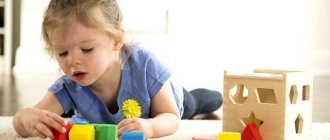
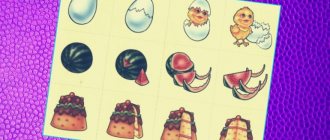
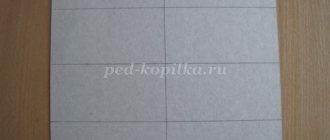
![Summary of a lesson on speech development for children 4–5 years old “Sound culture of speech: letter [p]”](https://mybabby.ru/wp-content/uploads/konspekt-zanyatiya-po-razvitiyu-rechi-dlya-detej-4-5-let-330x140.jpg)

